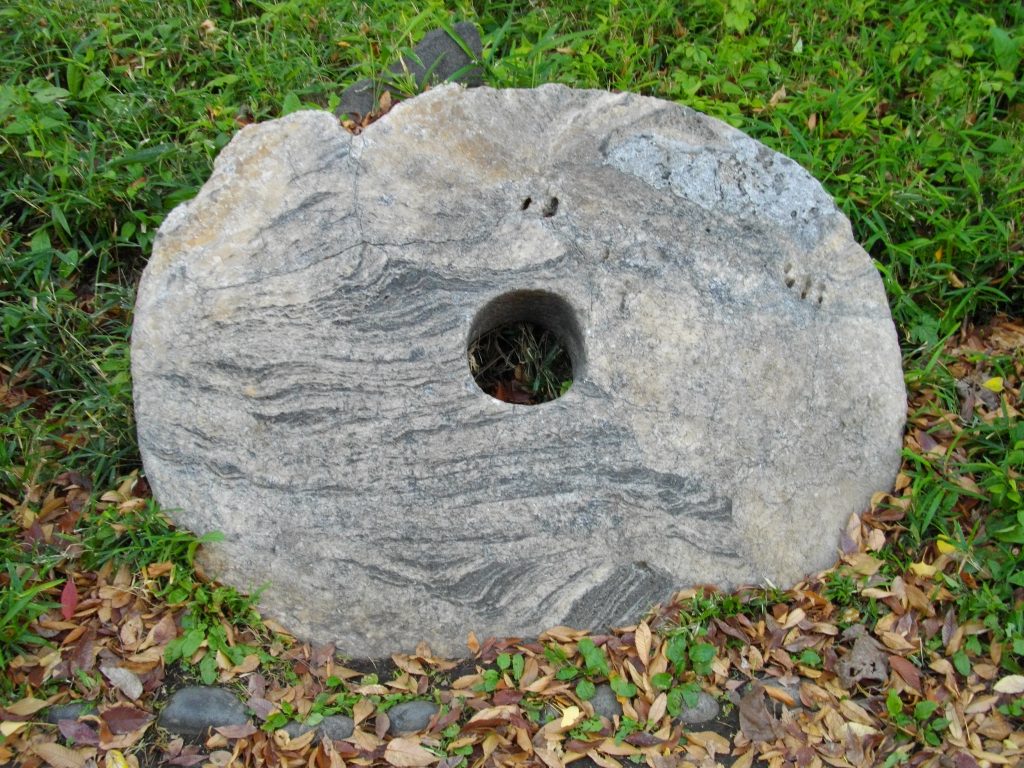Where “Cold, Hard Cash” is Very Literal
Carrying around cash usually isn’t very cumbersome. Bills fit neatly into wallets, unless you have a lot of them on you, in which case you’ll get no sympathy here. A pocket full of change can be annoying, but the problem is more the jingle than the heft. In general, though, pockets or handbags are all we need to transport our currency.
That’s because we don’t have one of these to lug around.

That’s a huge stone — four to six feet across in diameter. And yes, it’s money.
It’s called a rai stone, once the currency of choice for those who live on the Micronesian island of Yap, a tiny island in the Philippine Sea that is home to about 11,000 people. (Here’s a map, or, as Dr. Seuss might have said, a map of Yap.) The indigenous Yapese people have lived there for centuries, but they hardly were ones to stay on their tiny dot of land. We know this because the rai stones are made of limestone, and there’s no limestone to be found naturally on Yap. Instead, ancient Yapese traveled to other islands — Palau most importantly — and brought these huge specimens of rock back home with them, shaped them, and shined them up a bit. The stones, being therefore scarce, developed into a form of currency.
Larger rai stones are typically worth more than the small ones (which actually can fit in your pocket). How much a rai stone is worth, though, goes well beyond its size and weight. The stone’s history also became part of its value. Mental Floss explains:
Though many of the large stones look similar, not all rai is of equal value. Its worth depends on several factors. The first has to do with its provenance. How many lives were lost in transporting the stone to Yap? In the old days, it was a treacherous journey by sea to obtain the stones. Beyond the mining and transportation across three hundred miles, there was also a lot of rivalry between village chiefs, resulting in fights to secure the rai.
The second factor has to do with who discovered a particular stone. Having a famous sailor’s name attached to it, or the dedication of a chief who sponsored the mining trip, can greatly increase the rai’s value. There’s also the matter of craftsmanship. Many of the newer rai stones are highly polished with smooth edges, a look that’s been achieved with imported modern metal tools. The older stones, less polished and rough-hewn, were finished with homegrown shell tools, which gives them a higher value.
Because the larger rai stones are so difficult to transport, they’re also difficult to transfer from one owner to the next. So, the biggest ones don’t move — the Yapese just agree that the money has changed hands. Slate points out one particular example: “One of the rai stones in active circulation sits on the bottom of the Pacific Ocean, having tumbled from a canoe during a storm on the way back to Yap. Islanders agreed on its value after hearing the story of how it came to rest on the ocean floor.” So, it’s possible that someone “owns” the one depicted above — even though it is on display at Tokyo’s Hibiya Park, doesn’t mean it’s out of circulation.
The Yapese still use rai stones today, although more for their cultural significance than for commerce; since the early 20th century, they’ve been using modern currency. (Micronesia uses the United States dollar.) Western speculators are somewhat to blame for this change; they caused some devaluation, with what are, effectively, counterfeit rai. Atlas Obscura explains: that in the late 1800s, “David Dean O’Keefe, an Irish-born American sailor and adventurer, started producing rai stones in large quantities using modern tools imported from Hong Kong.” Inflation came next, although the Yapese found a way to identify O’Keefe-made rai and devalued them specifically.
Bonus fact: Hyperlocal currency isn’t left to developing nations — there are also a surprising number of experiments on “community currencies,” with dozens attempted in the U.S. alone. (Here’s a list.) One of the most notable ones is called BerkShares, used by a handful of small towns in the Berkshires of Massachusetts. Local residents can purchase $1 in BerkShares for 95 cents and use them at approximately 400 participating businesses instead of U.S. currency — all in an effort to keep local dollars local. As a neat side effect, in the words of the New York Times, “People can pay for groceries, an oil change, even dental work with currency bearing the likenesses of local heroes like Herman Melville and Norman Rockwell.”
From the Archives: Bowie Bonds: Another alternative currency of a type, one focused on the music of David Bowie.
Related: “The Island of Stone Money,” a book about Yap from the early 1900s. And yet, it’s available on Kindle.
